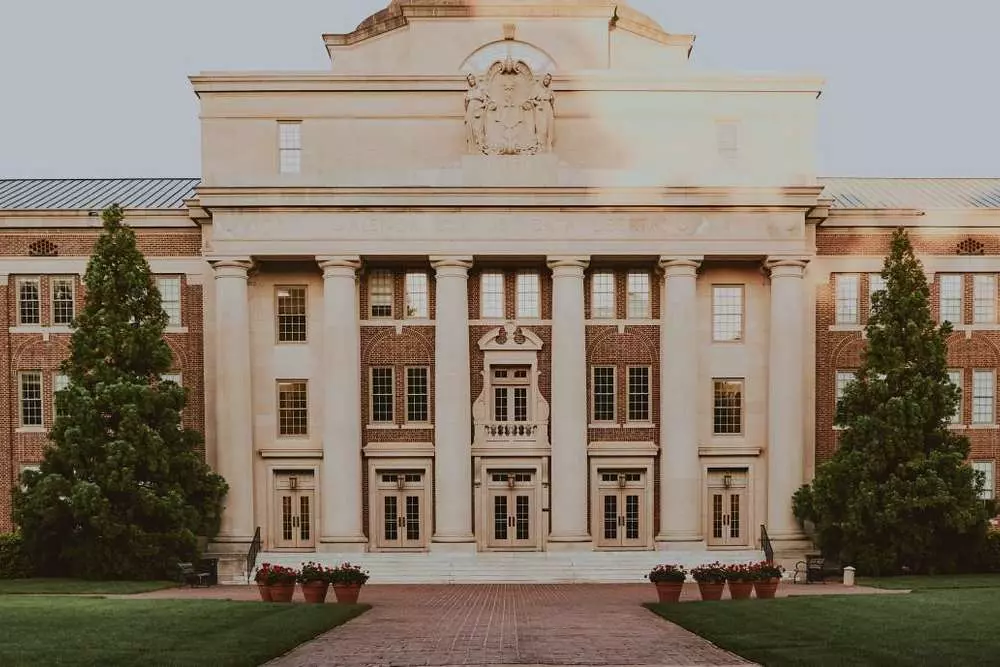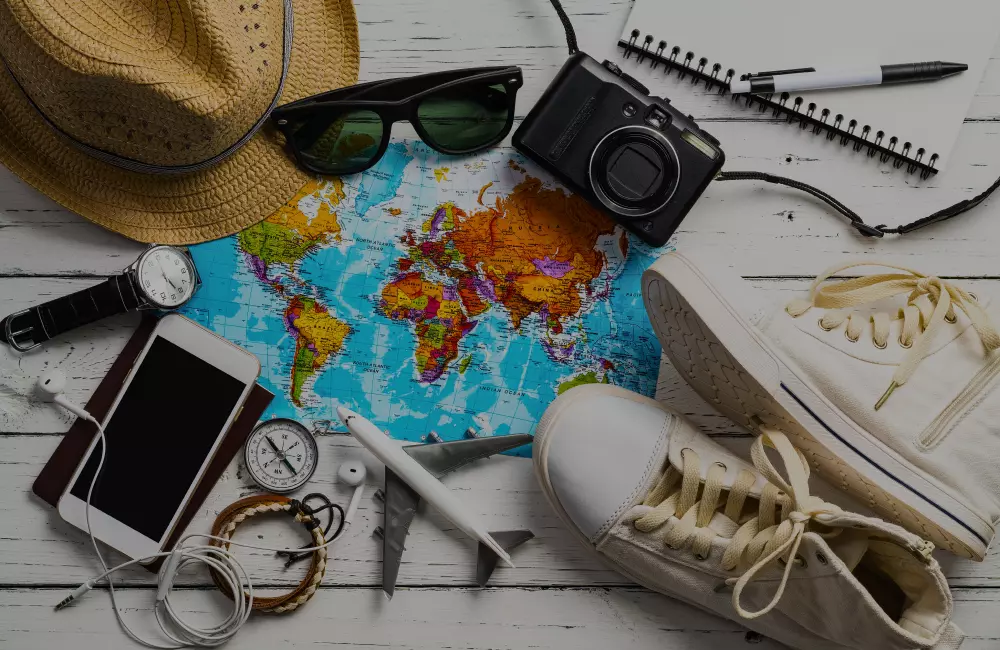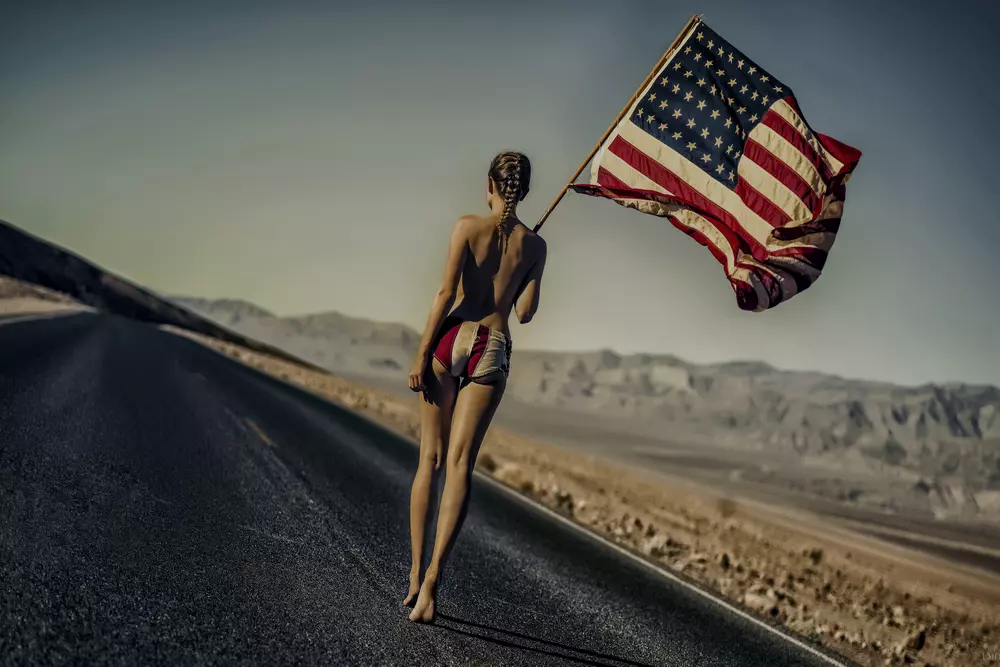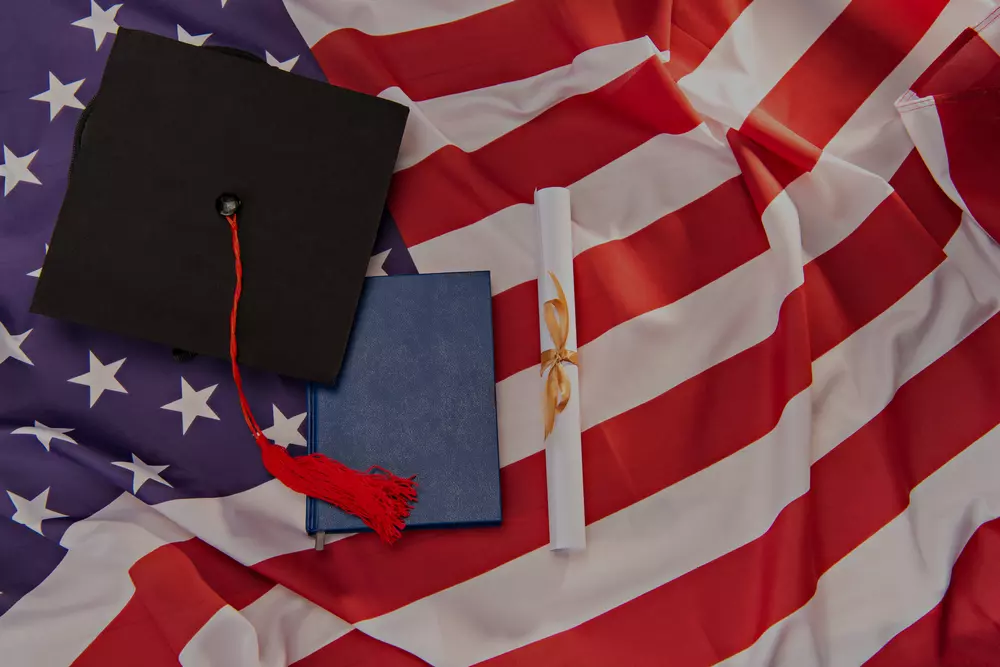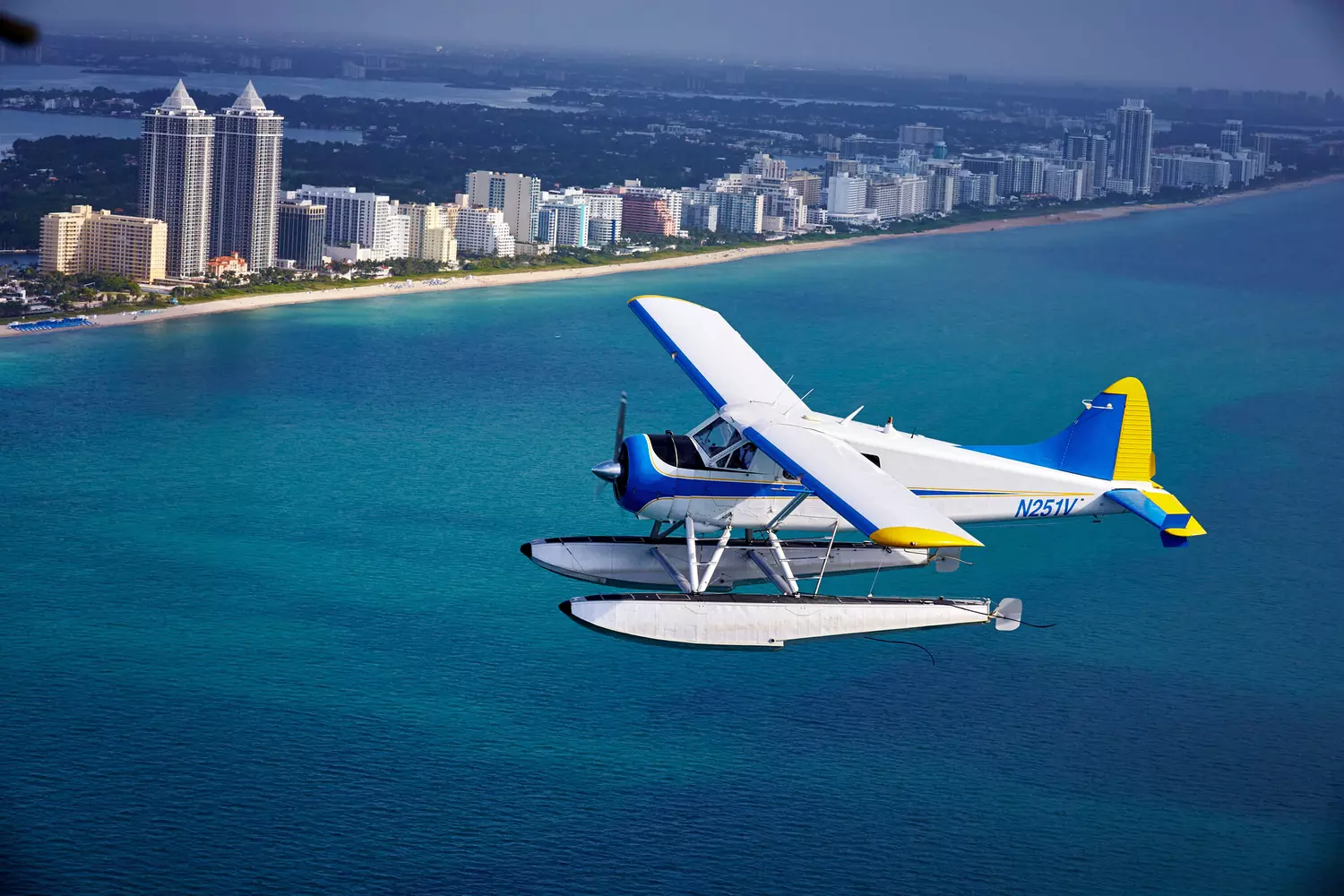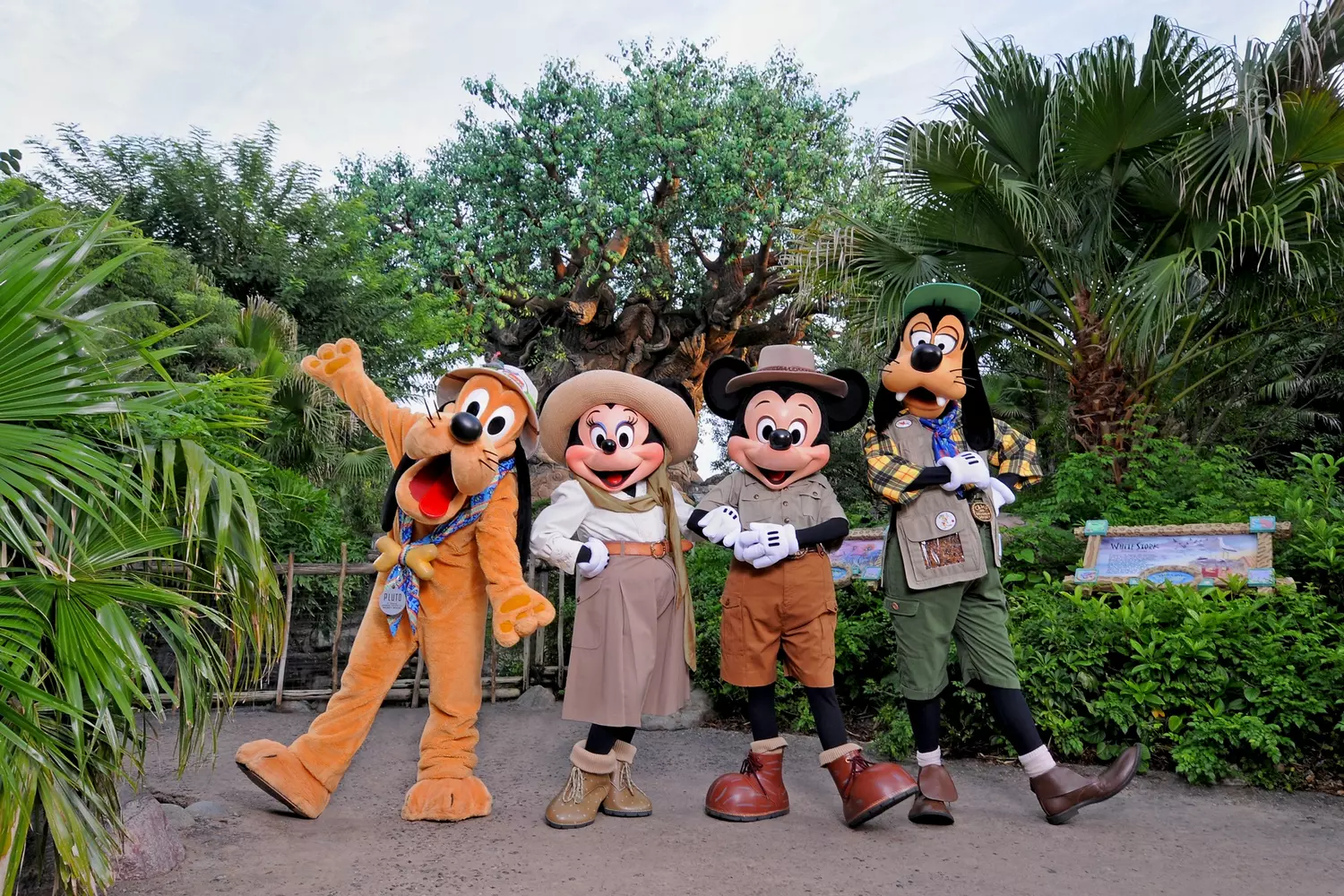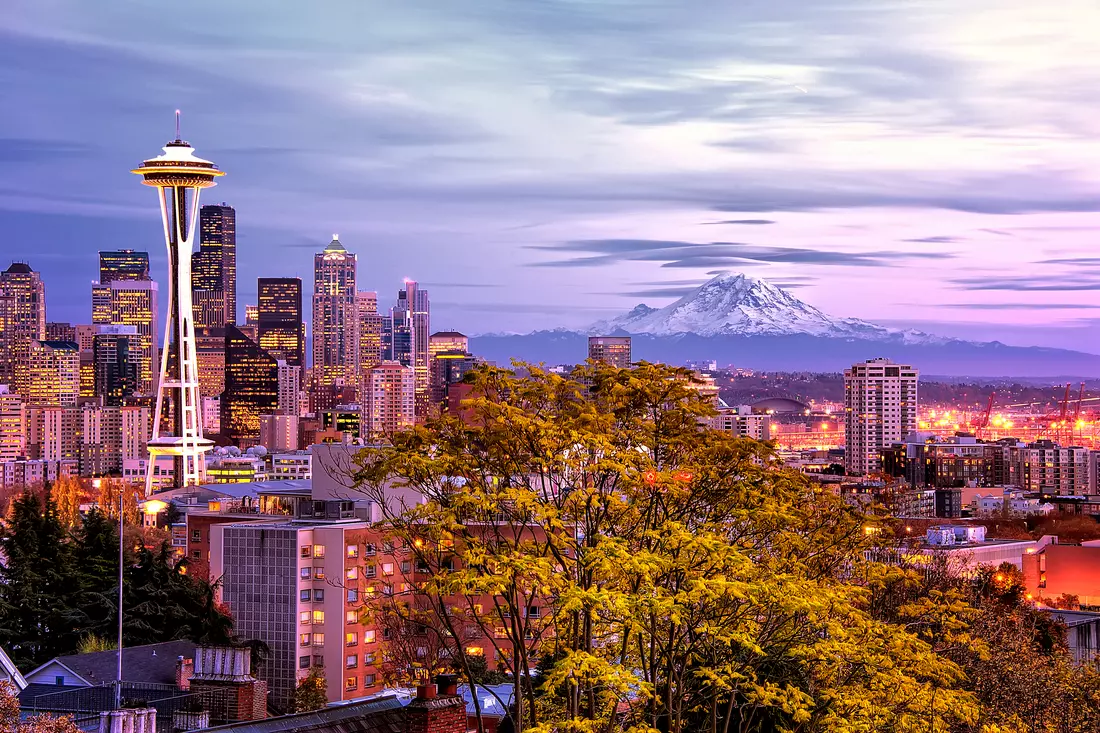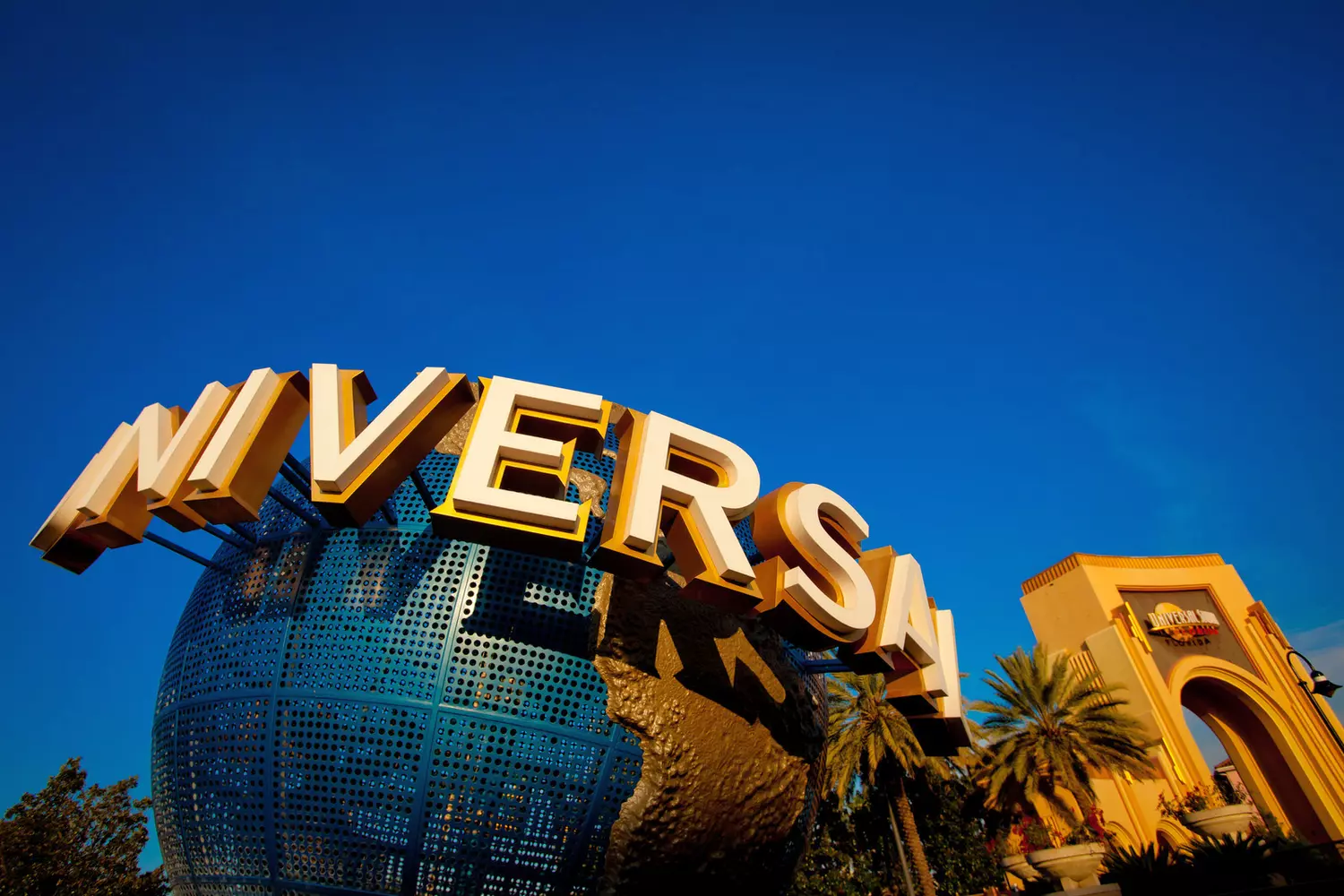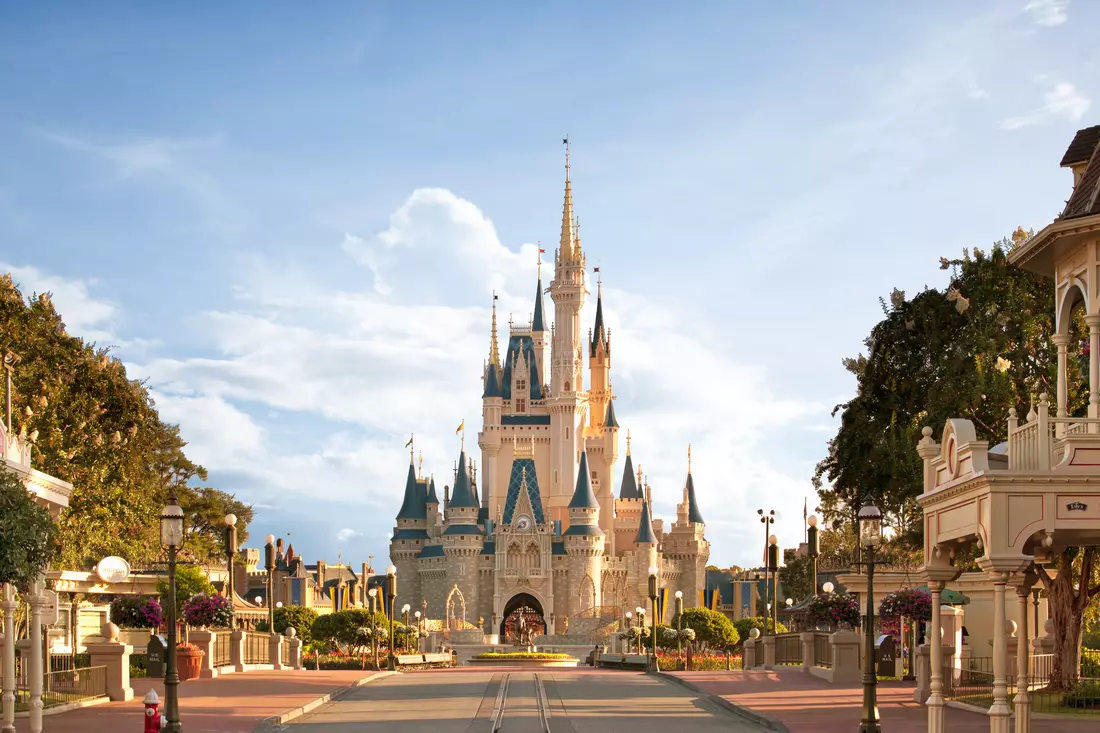His name is known even to those far from politics. His image is a living illustration of the American spirit: determined, resolute, charismatic. Theodore Roosevelt was not just the president of the United States — he was the embodiment of an era in which the country was searching for itself and its path. He became a symbol of faith in action, the power of character, and the strength of ideas. His life is not just a biography; it is a novel at the crossroads of action, philosophy, and reform.
How did a person with chronic asthma in childhood become a hunter, cowboy, boxer, and leader of a nation? How did an intellectual, who wrote books about wildlife, become a war hero and receive the Nobel Peace Prize? How did a politician, capable of both rage and compassion, manage to launch laws that are still in effect today?
This article is neither a history textbook nor a panegyric. It is a story about a man who knew how to make mistakes but always rose again. One who spoke loudly, acted swiftly, and thought about the future. Theodore Roosevelt is a challenge to oneself and proof that true leaders are born not because of, but despite circumstances.
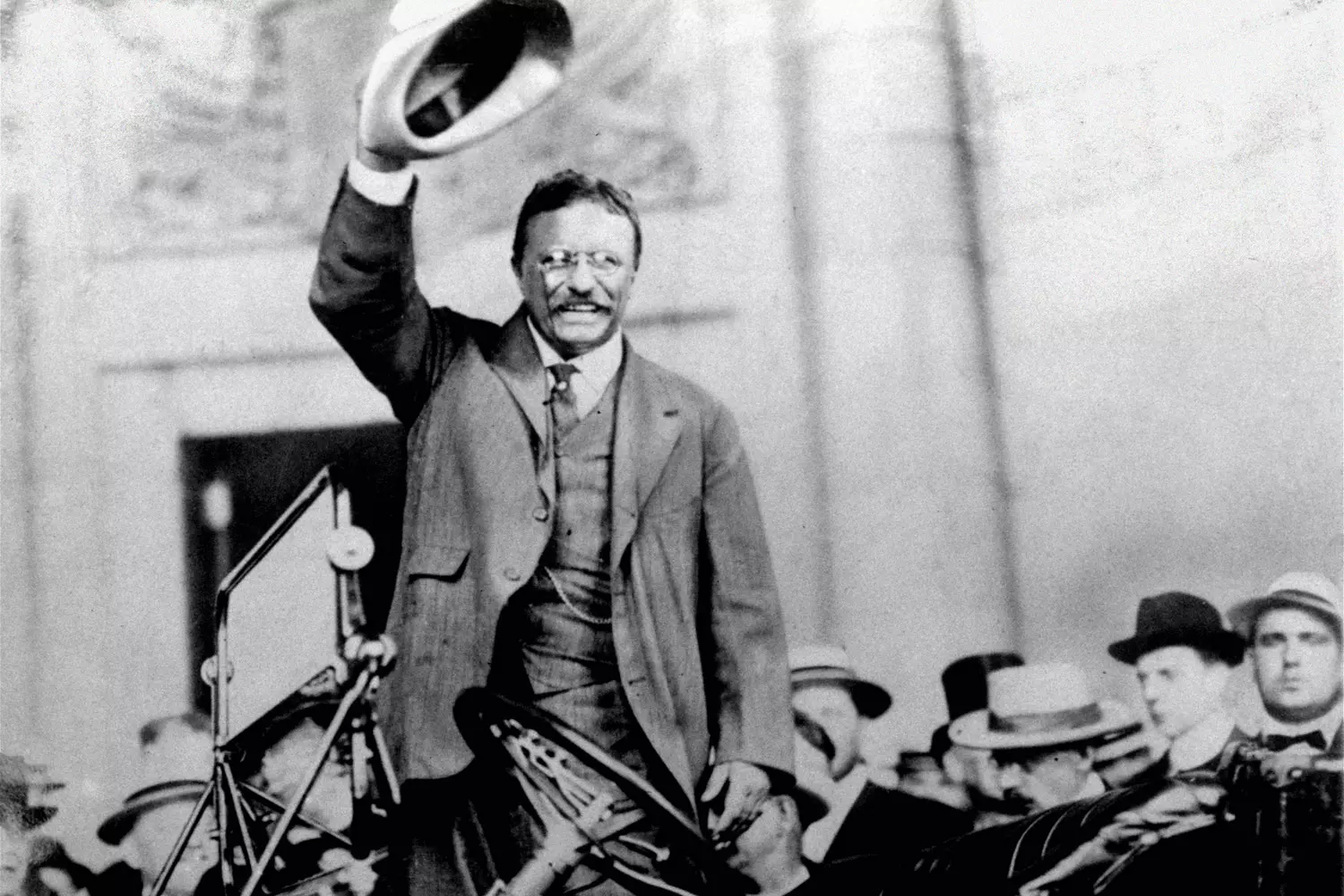
"Roosevelt was a man who could have ruled the world. He had the energy of a volcano, the mind of a philosopher, and the heart of a child." — Winston Churchill
The Little Giant: The Early Years of Theodore Roosevelt
The future president was born on October 27, 1858 in New York City — in a family where honor, duty, and self-education were not empty words. His father, Theodore Roosevelt Sr., was a businessman and philanthropist, a man of action who believed in social responsibility. His mother, Martha Bulloch, was a southern woman with a strong character and aristocratic manners. In this eclectic mix of stern Northern businesslike spirit and Southern elegance, a personality was formed — one destined to change the face of America.
- From early childhood, Theodore suffered from severe asthma — the attacks were so intense that he would choke at night and could not play with other children. At that time, doctors could only shrug their shoulders, and medicines were ineffective. An ordinary child might have resigned himself to the role of a "homebound bookworm". But not Roosevelt.
- Young Theodore found solace early on in books and observing nature. He kept diaries, collected insects and birds, and spent hours reading about animals and travels. This knowledge later developed into a true passion for natural sciences and history. At just ten years old, he published his first "book" — a booklet about insects, which he printed for his family.
But the book was only half the picture. His father saw how the illness was suppressing his son and once said: "You have the mind, but you lack the body. Build yourself a body — that is your duty." This phrase changed everything. Theo began training: he boxed, lifted weights, swam, and rode horses. He literally reforged himself — physically and mentally. - This child, whom doctors had considered doomed, became a symbol of willpower. He not only overcame his illness — he turned it into fuel for his future energy. In youth, Roosevelt was already not only an erudite but also a strong, resilient, and active young man, ready to fight any injustice, whether in the forest or in the halls of power.
"Life is worth fighting for," he once said, and he lived it as if each day was a battle — but also an adventure. Theodore Roosevelt was not just the 26th president of the United States. He became a symbol of determination, reform, and true courage.
When the time came to think about the future, for Theodore Roosevelt there was no question: education was a continuation of personal discipline. He entered Harvard College in 1876. Despite still fragile health, Roosevelt stood out with enviable energy, encyclopedic interests, and a thirst for action.
During his freshman year, he literally lived on the edge of nervous exhaustion: studying, training, writing, discussing politics, participating in clubs. He was especially attracted to natural sciences and history. He considered a career as a professor or naturalist, even thought about working in a zoological museum — but fate led him into politics.
At Harvard, he was not a "golden boy," but he earned a reputation as a stubborn, honest, passionate student, capable of both inspiring his interlocutors and arguing with professors. Even then, he displayed what today would be called "leadership qualities": people listened to him and followed him, even if they disagreed.
Interesting fact: at Harvard, he also began writing his first serious work: a biography of his hero — naval officer and War of 1812 hero — Thomas Macdonough. This book was published in 1882, just one year after graduation, and became the first in a series of dozens of works written by Roosevelt.
After graduating from Harvard, Roosevelt enrolled in the law school at Columbia University, but quickly realized that jurisprudence was not for him. He was drawn not to theory, but to practice — not abstract laws, but life itself. He dropped out of law school to pursue a political career — and soon his name was already heard in the New York State Assembly.
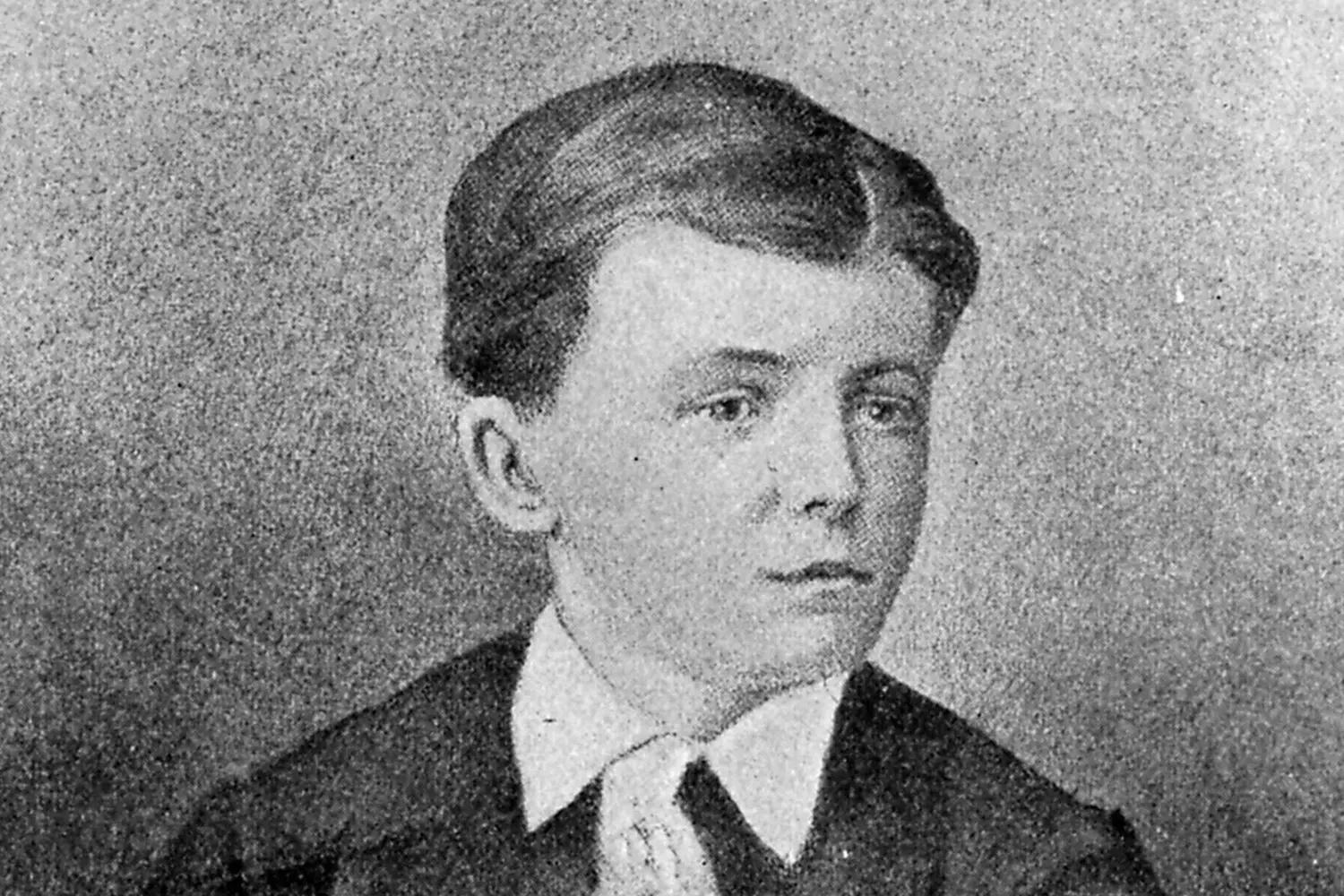
From the Podium to the Peak: Theodore Roosevelt’s Political Career Before the White House
Theodore Roosevelt entered politics early — and with fire in his eyes. In 1881, at the young age of 23, he was elected to the New York State Assembly as a Republican. His youth, energy, and relentless fight against corruption immediately set him apart from his colleagues. He stood against backroom deals and political bosses, earning both respect and enmity.
He gained a reputation as a "moral fighter" — a man who tolerated no half-measures. Even at such a young age, he openly challenged party machines. His principles often hindered his career advancement, but they made him recognizable and respected.
However, a personal tragedy in 1884 — the death of his wife Alice and his mother on the same day — pushed him away from politics for a time. Roosevelt moved west, to Dakota, where he spent several years living as a cowboy and rancher, working with livestock and participating in catching outlaws. This period hardened his character and further strengthened his image as a "man of action."
Returning to New York City, Roosevelt resumed his public service at the federal level:
- 1889
He was appointed a member of the U.S. Civil Service Commission. Here he proved himself a fighter for government reform: opposing nepotism and supporting meritocracy. - 1895
He became the New York City Police Commissioner — and immediately began reforms. He personally inspected patrols at night, fought bribery and drunkenness among officers. The reforms were unpopular with the old guard, but the citizens appreciated his honesty and principles. - 1897
He was appointed Assistant Secretary of the Navy. It was here that he played a key role in modernizing the fleet and preparing the U.S. for possible military actions. His reports and initiatives laid the foundation for America's naval supremacy in the 20th century.
When the Spanish-American War broke out in 1898, Roosevelt didn’t sit behind a desk. He resigned his post and organized a volunteer cavalry regiment — the famous "Rough Riders." Their participation in the Battle of San Juan Hill in Cuba became legendary, and Roosevelt became a national hero.
The victory brought him a wave of popularity, and later that year he was elected Governor of New York. There, he continued his reform agenda: advocating for corporate taxation, labor conditions regulation, and urban infrastructure control. His methods irritated the old party elite, and to "remove" the inconvenient reformer, they nominated him for Vice President under William McKinley — a position then considered mostly ceremonial.
"I prefer to be an active citizen rather than a passive president of the senate," he said, hinting at his dissatisfaction with the vice-presidential role.
But fate had other plans: after McKinley’s assassination in 1901, Roosevelt became the youngest president in U.S. history — at 42 years old.
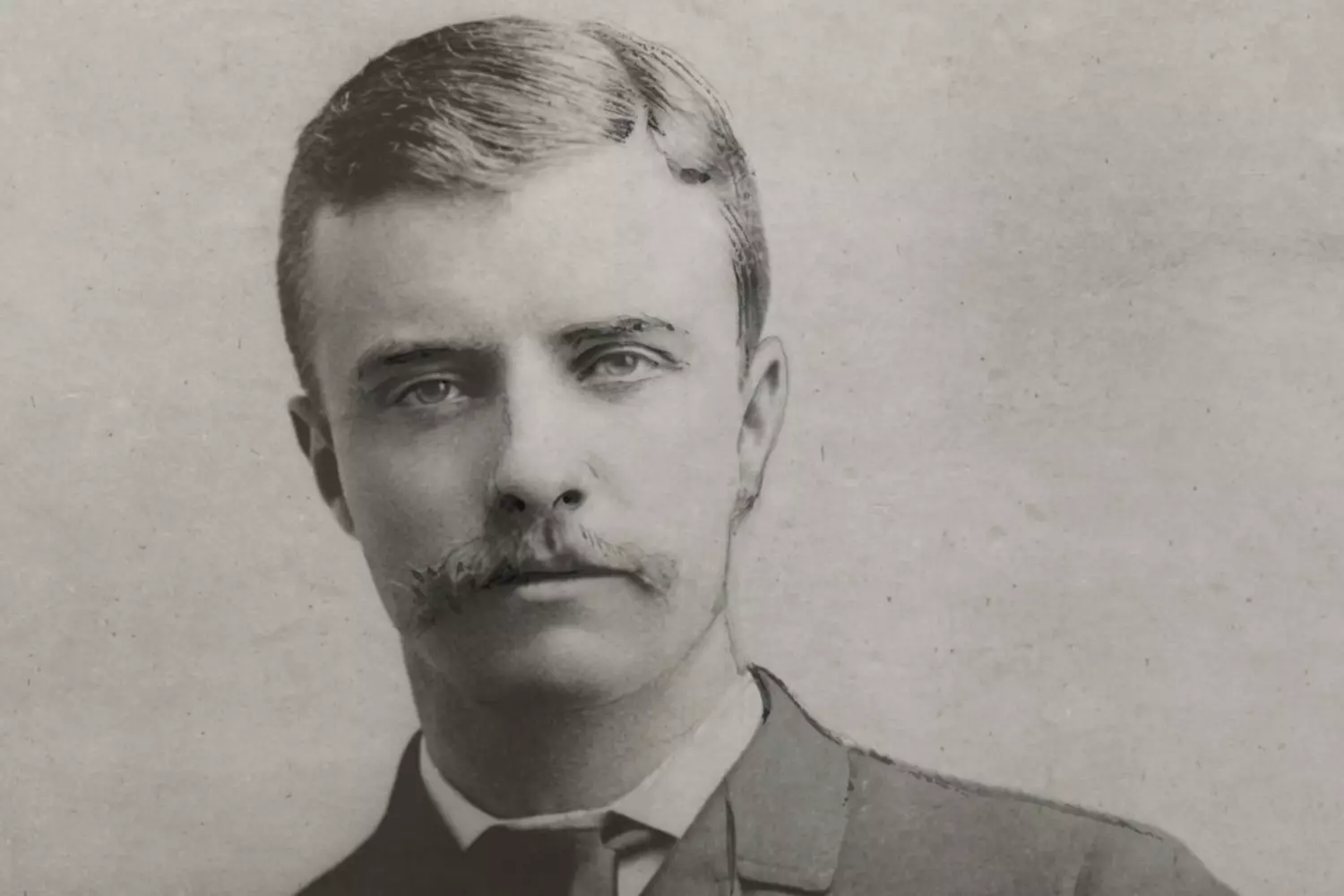
The White House and Beyond — An Arena of Reforms and Ambitions
Becoming president in 1901 after the assassination of William McKinley, Theodore Roosevelt found himself in a unique position: young, energetic, popular, and independent from party bosses. He became the 26th President of the United States — and from the very first days showed that he intended not just to occupy the office, but to take action.
- 01. First presidential term: reforms that shook the system
Roosevelt immediately set his course: to protect the interests of the common American, limit the unchecked power of corporations, and bring order to social and economic spheres. He called this policy Square Deal — “A Fair Deal” for every citizen, regardless of origin or wealth. Key points included:
- He initiated antitrust lawsuits against the largest trusts — Standard Oil, Northern Securities, and others. In total, he filed more than 40 lawsuits against monopolies.
- Supported labor unions and workers' strikes, becoming the first president to openly side with workers in labor disputes — notably during the 1902 coal miners' strike.
- Passed food and drug safety laws (the 1906 Act), laying the foundation for the modern FDA.
- Launched a large-scale conservation program: over 230 million acres of land were placed under protection.
Interesting fact: Roosevelt was the first president to invite an African American (Booker T. Washington) to dine at the White House — which sparked outrage in the South.
- 02. The 1904 election: a victory without compromises
Although he became president not through election but by tragic circumstances, Roosevelt proved his legitimacy. In 1904, he confidently won the election, gaining more than 56% of the vote. This was a public endorsement of his policies.
He became the first president elected after an “accidental” ascent to office. But on inauguration day, he declared: “I will not run for a third term” — although he later changed this decision. - 03. Second term: strengthening foreign policy and new horizons
In his second term, Roosevelt focused not only on internal reforms but also on strengthening foreign policy:
- Completed the construction of the Panjang Canal — one of the greatest infrastructure projects of the century.
- Reformed the army and navy, strengthening the position of the USA as a world power.
- Received the Nobel Peace Prize for mediating the Russo-Japanese War — the first American to be honored with this award.
- Launched the “Great White Fleet” — a demonstration of the USA’s strength and ambitions on the world stage.
By the end of his second term, he remained one of the most popular presidents in history. Nevertheless, he kept his word and in 1909 left the White House, passing power to William Taft.
- 04. African expedition: from the Oval Office to the savannah
But Roosevelt was not a man capable of long rest. Almost immediately after leaving office, he set out on an expedition to Africa organized by the Smithsonian Institution and the Museum of Natural History. The goal was to collect specimens of animals, plants, and insects for American museums.
He spent nearly a year in savannas, swamps, and jungles — hunting, studying flora and fauna, and keeping scientific journals. The expedition gathered more than 11,000 specimens, including 500 mammals, 400 birds, and hundreds of reptiles and insects. In 1910, he returned to the USA as a triumphant figure — not just a former president, but a national hero and naturalist.
A quote from his speeches after the expedition: “Man must not sit still. Nature, effort, risk — all of this keeps the soul alive.”
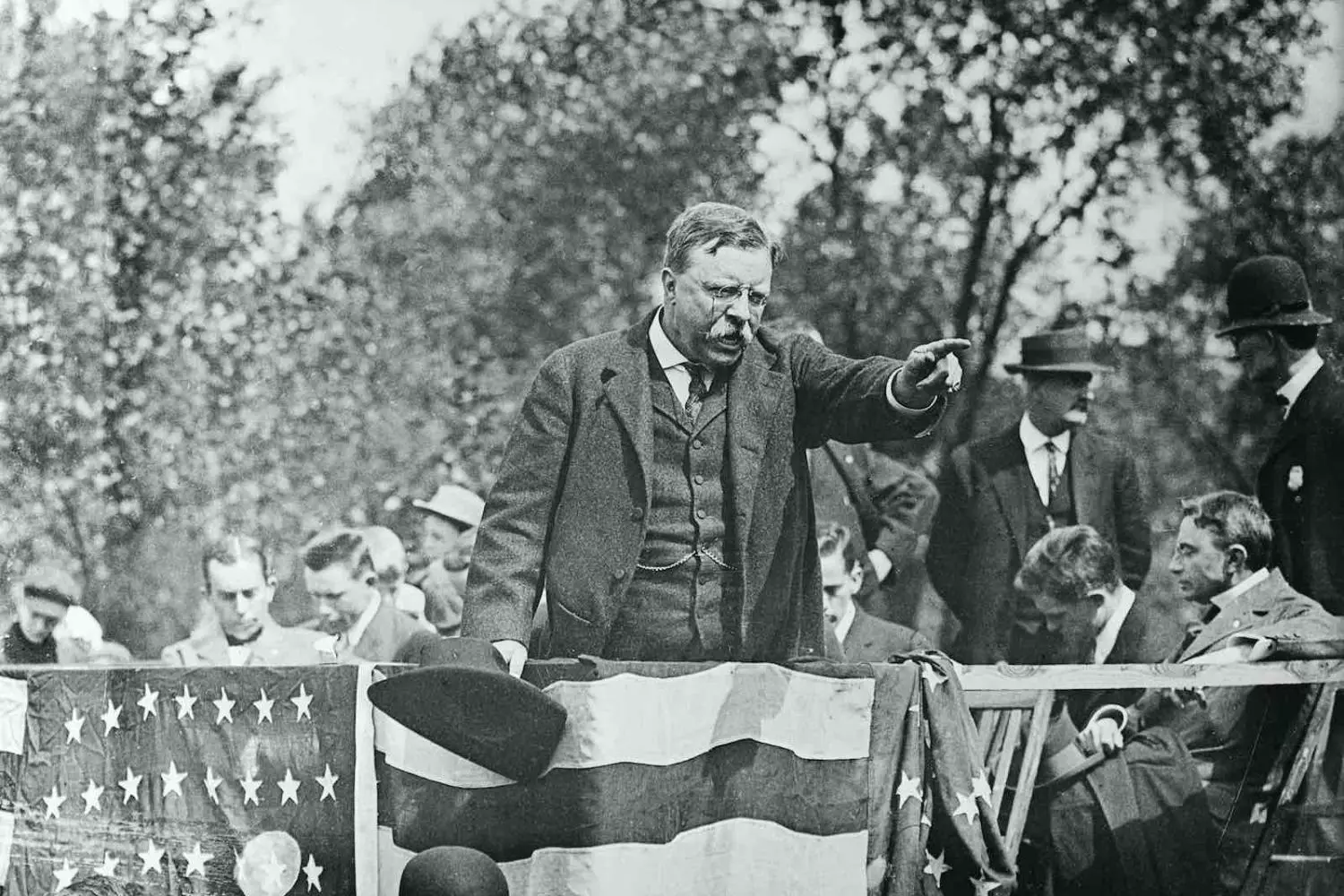
The Moose Against the System: The Final Chapters of Theodore Roosevelt’s Life
After leaving the White House, Roosevelt was confident he had found a worthy successor — William Taft. However, he soon realized that his political “child” had taken a different path. Taft began to roll back many of the reforms that Roosevelt had spent years building. That’s when he decided to return.
In 1912, Theodore Roosevelt ran for president a third time — but no longer as a Republican. When he was denied the party’s nomination, he created his own — the Progressive Party, better known as the Bull Moose Party. He explained his choice by saying: “I’m as strong as a moose.”
The party’s platform was radical for its time:
- Universal health insurance;
- A minimum wage;
- Protection of women’s rights;
- Restrictions on corporate influence in politics.
Roosevelt traveled the country, giving speeches, exposing corruption, and inspiring millions. His rallies filled stadiums. In the end, he came in second in the election — receiving more votes than the incumbent president Taft. This was unprecedented: a third-party candidate beating one of the two major contenders.
- 01. First assassination attempt: the bullet that didn’t stop a speech
On October 14, 1912, during a trip to Milwaukee, Theodore Roosevelt was shot in the chest at close range. The bullet pierced his eyeglass case and a 50-page speech folded in his jacket pocket, slowing the impact. Roosevelt dropped his cane, staggered — and... refused hospitalization.
He told the crowd: “Ladies and gentlemen, I have just been shot, but as far as I can tell, the bullet is not fatal. I have a speech, and I will deliver it.” He spoke for nearly an hour, bloodstains visible on his shirt. The bullet remained lodged in his body — doctors decided not to remove it.
“No political psychopath will make me silent,” he later said. This episode only strengthened his legendary image — Roosevelt became a symbol of unyielding will. - 02. South American expedition: pushing limits
In 1913, shortly after his unsuccessful election bid, Roosevelt once again stepped away from politics — and once again into the unknown. Together with Brazilian Colonel Cândido Rondon, he set out to explore an uncharted river in the Amazon. The river was called the River of Doubt — later renamed the Roosevelt River. The expedition lasted several months and was extremely dangerous: tropical diseases, wild animal attacks, food shortages, team losses, and constant conflicts with indigenous tribes.
Roosevelt nearly died: he contracted an infection from a leg wound and, by his own admission, asked to be left behind to die so as not to hold back the group. His son Kermit insisted that he continue. In the end, the expedition survived — and entered history as one of the most heroic and scientifically significant journeys of the 20th century. “It was the hardest struggle of my life,” he wrote in his diaries — “and the most important.” - 03. Second assassination attempt: shadow of the past
Despite his lost political power, Roosevelt continued to speak out, write, and shape public opinion. In 1916, he declined to run again, supporting another candidate. But in 1918, near the end of his life, a strange incident occurred: there was another attempt on his life — this time by poisoning, but the plot was foiled. Details remain unclear, but his circle did not rule out political motives.
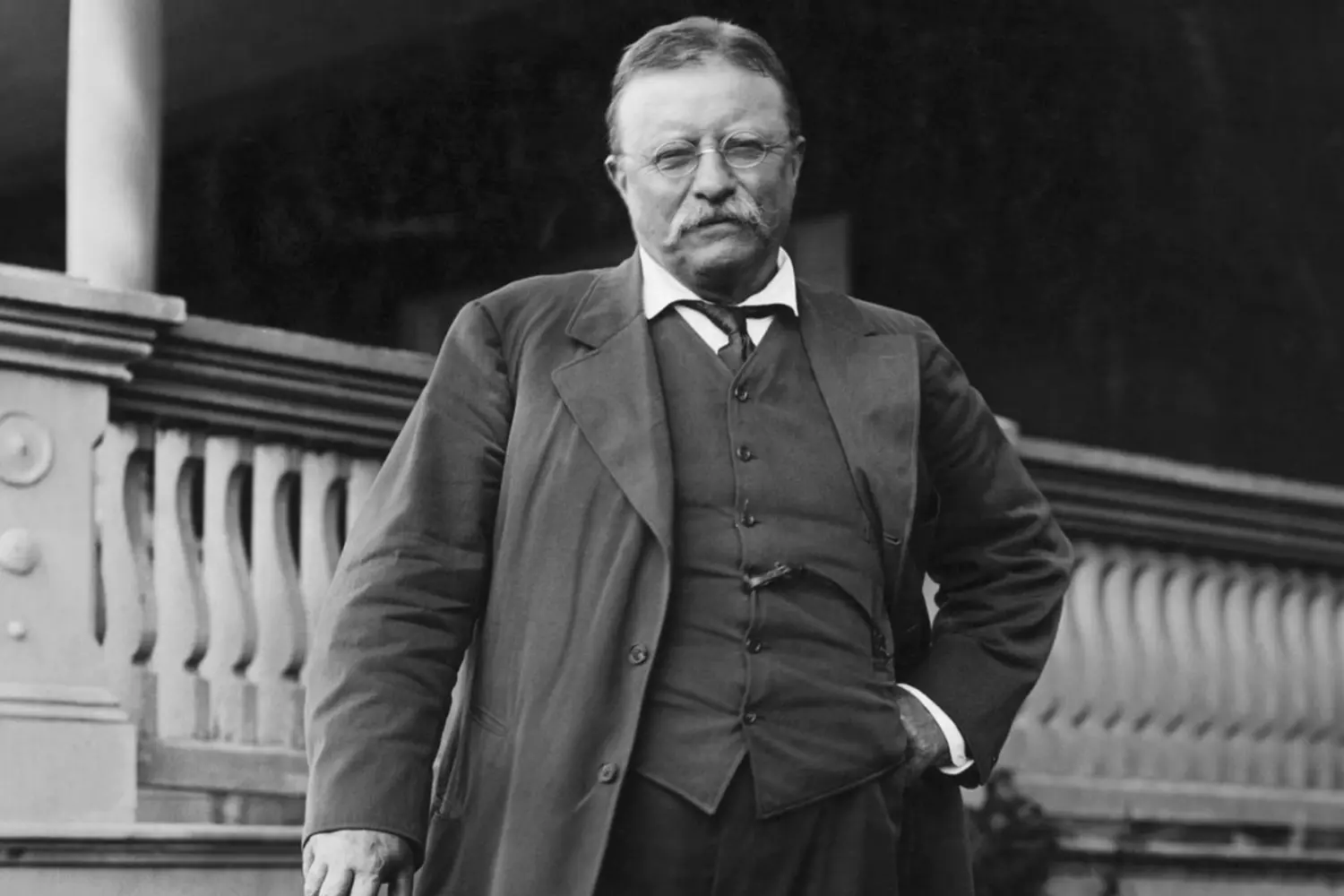
The Final Years of Theodore Roosevelt: Wisdom and the Unyielding Fighting Spirit
After tumultuous years in politics, expeditions, and endless public affairs, it seemed that a peaceful twilight awaited Theodore Roosevelt. Yet even in his final years, he remained true to himself — active, full of energy and ideas.
Following his defeat in the 1912 election and the heroic but exhausting Amazon expedition, Roosevelt returned to the U.S. rejuvenated, although his health was already declining. He continued writing books, delivering lectures, and influencing public opinion. Even his political opponents respected him, as Roosevelt embodied American perseverance and passion for life.
During these years, he spoke often about the need for justice, social reforms, and active citizen participation in the country’s fate. His ideals — honesty, hard work, courage — remained vibrant and inspiring. Despite his age and ailments, Roosevelt maintained remarkable physical activity, engaging in horseback riding and even light wrestling.
Interesting fact: in 1918, when the world was gripped by the influenza pandemic, Roosevelt actively advocated public health measures, urging people not to neglect prevention. He understood that only collective effort could overcome global challenges.
However, in January 1919, his health gave out. On January 6, Theodore Roosevelt peacefully passed away in his sleep at the age of 60. His death was a profound loss for the nation. Newspapers wrote: “The heart of a great American has stopped.” Millions mourned the passing of one of the brightest and most charismatic leaders in U.S. history.
But even after his death, his legacy lived on. His reforms, books, and ideas continue to inspire generations. Roosevelt himself became a symbol of energy, unyielding will, and an endless love of life.
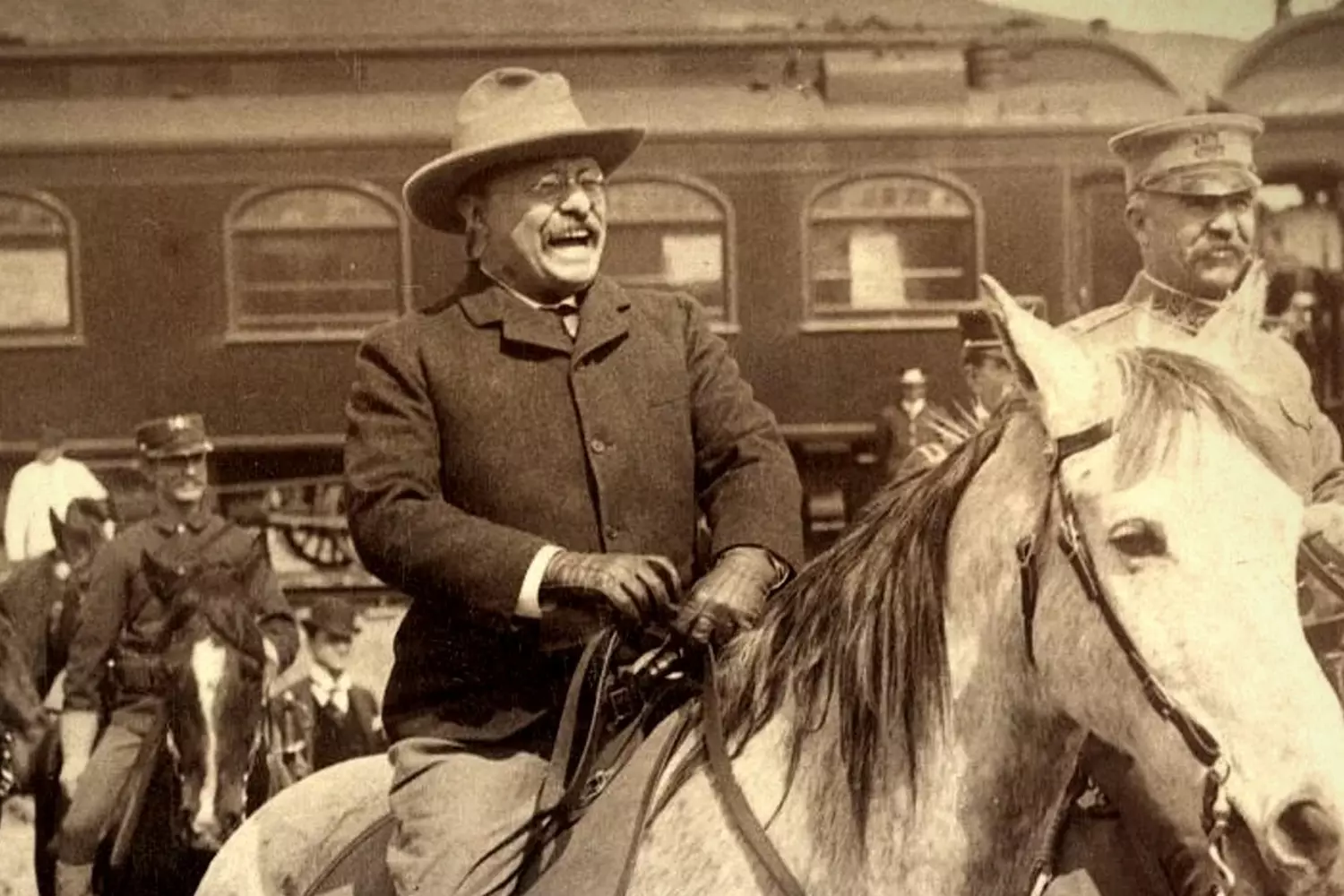
The Personal Life of Theodore Roosevelt: Family, Love, and the Character of a Great Leader
Behind Theodore Roosevelt’s brilliant political career and great achievements stood a complex, multifaceted man — a loving family man, passionate naturalist, and extraordinarily energetic individual whose personal life was filled with both joyful moments and deep tragedies.
- 01. Love and Family — Foundation and Inspiration
In 1880, Roosevelt married Alice Hathaway Lee Roosevelt, a young and beautiful woman from a wealthy family. Their union was a true love story, full of tenderness and mutual understanding. Alice supported her husband in all his endeavors, shared his passions, and stood by him during the most difficult times.
The couple had five children, and Roosevelt always devoted much attention to them despite his busy schedule. He often took his children on travels and hikes, passing on to them his love for nature and adventure.
However, 1884 became the most tragic year in Roosevelt’s life: on the same day, his mother Martha and wife Alice both passed away. This double loss deeply shocked him and led to a temporary withdrawal from politics. To cope with his grief, he moved to the American West, where he lived for several years as a cowboy and rancher. This period not only helped him survive the losses but also shaped the legendary image of a brave and independent man.
Several years later, he met his second love — Edith Kermit Carow. Their marriage was strong and happy, and they had six children together. Edith became a reliable companion throughout the rest of Theodore’s life, supporting him at every stage of his career. - 02. Character and Habits: Energy and Passion in Everything
Roosevelt was a man of incredible energy and productivity. He woke up early, got out of bed with the motto “Do what you can, with what you have, where you are,” and didn’t know the meaning of “fatigue.” His days were scheduled down to the minute — from early morning runs to late nights at his desk.
He loved sports — boxing, swimming, horseback riding, and hiking. These activities not only kept him physically fit but also helped him relieve stress and maintain fighting spirit.
Besides politics, he was a passionate writer and explorer. Throughout his life, he authored more than 35 books — on nature, history, travel, and politics. His diaries and letters are full of wit and vivid observations.
Interesting fact: Theodore Roosevelt was one of the first presidents to regularly photograph himself with his family and document his life through pictures. His family album is a genuine historical archive, capturing not only official moments but also everyday joys and challenges.
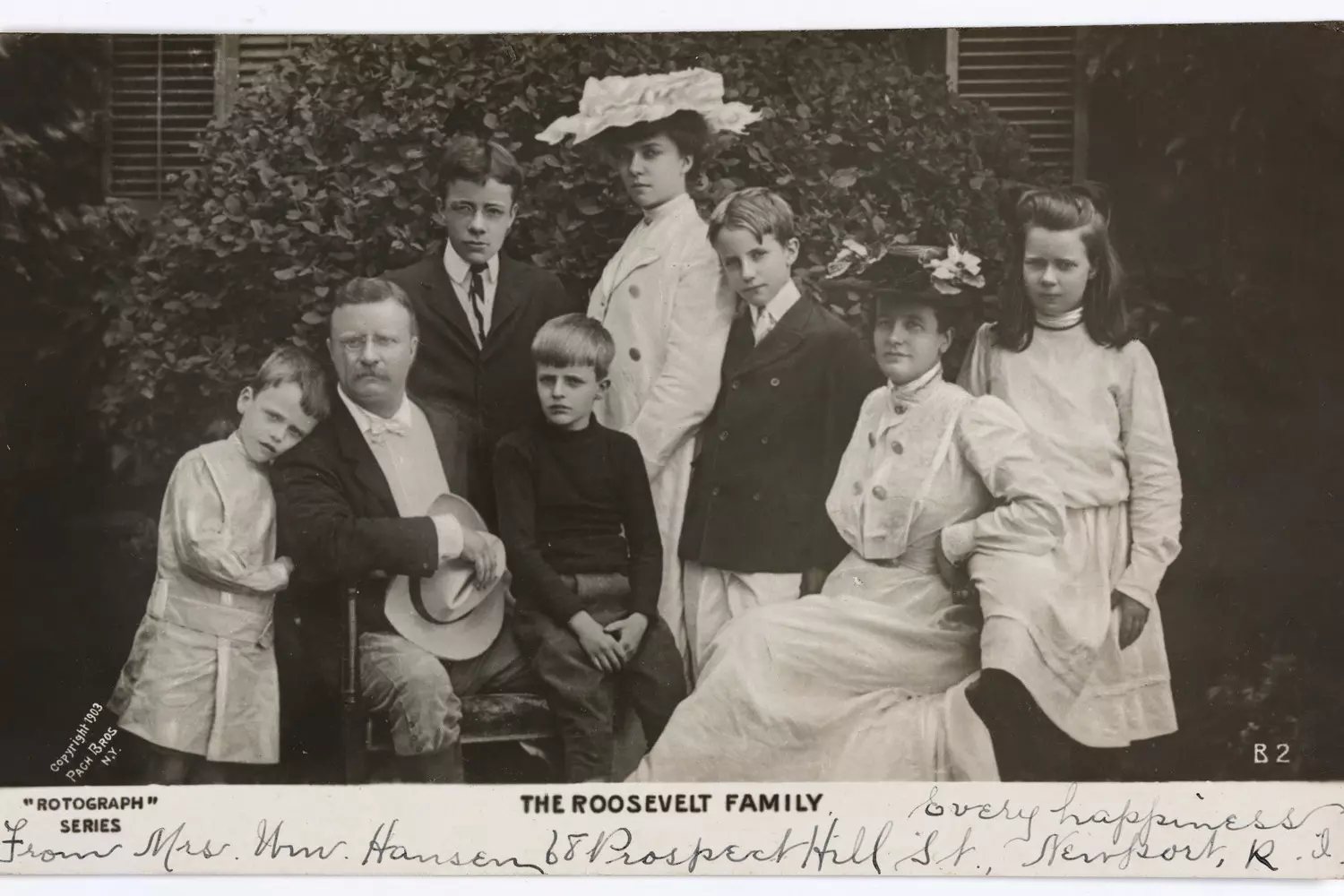
Theodore Roosevelt — Reformer and Man of the People: How He Changed America Forever
When Theodore Roosevelt took office as president in 1901, America was on the brink of profound change. Industrialization was transforming the country’s landscape, cities were growing, and the economy was booming. But alongside progress, problems were mounting — monopolies stifled competition, workers suffered harsh conditions, and corruption permeated the highest levels of government. At that moment, America needed a leader unafraid to take responsibility and push through real reforms. That leader was Roosevelt — a man of action, decisive and passionate.
- 01. Fighting Monopolies: The Trust Buster
One of the greatest challenges of the early 20th century was the unchecked power of large corporations and trusts, which controlled prices and dominated markets. Many saw them as a threat to free competition and democracy.
Roosevelt made fighting monopolies a top priority. He actively initiated antitrust investigations against giants like Standard Oil and Northern Securities. His determination earned him the nickname — the “trust buster.” He filed over 40 lawsuits against companies abusing their power.
This tough stance met resistance from business elites, but Roosevelt stood firm, believing the government must protect the interests of all citizens, not just the wealthy. - 02. Champion of Workers: The President of Labor
Roosevelt became the first U.S. president to openly support the labor movement in disputes with industrialists. One of the most notable examples was the 1902 coal miners’ strike — a massive labor conflict threatening the economy and social stability.
Instead of siding with the employers as was customary before, Roosevelt invited leaders of both the strikers and mine owners to negotiate, acted as a mediator, and helped reach a compromise. This was a breakthrough in government policy — the first time a president publicly recognized workers’ rights. - 03. The Pure Food and Drug Act: Caring for the Nation’s Health
Another important achievement was the initiative to regulate the quality of food and medicines. Until then, the market was practically unregulated, and many dangerous or substandard products reached consumers.
In 1906, a law was passed that laid the groundwork for the Food and Drug Administration (FDA). Roosevelt personally supported this law, understanding that the nation’s health depended directly on the safety and quality of products.
This step became the foundation of the modern consumer protection system and an example of how government can genuinely care for its citizens. - 04. Infrastructure Development: Breathing Freely
Roosevelt believed that for the country to thrive, infrastructure — canals, roads, and railways connecting cities and regions — needed to be developed to facilitate trade and improve people’s lives.
Under his leadership, major projects began, including the construction of the Panama Canal — one of the greatest engineering feats of the 20th century, opening new trade routes between the Atlantic and Pacific Oceans. - 05. Father of National Parks: Nature as the Nation’s Soul
Alongside economic and social reforms, Roosevelt emerged as a deeply nature-oriented leader. He was the first president to recognize that nature is not just a resource to exploit but a sacred heritage that must be preserved.
He established five national parks, declared 18 national monuments, and laid the groundwork for the protection of about 150 national forests. Thanks to this, millions of Americans today can enjoy the beauty and power of nature. His love of nature was genuine and profound — he was himself a hunter, naturalist, and explorer writer. - 06. Man of Peace and War: Nobel Prize and Diplomacy
Although Roosevelt was not afraid of war and advocated for a strong army and navy, he also valued peaceful conflict resolution. The most vivid example was his role in ending the Russo-Japanese War of 1905 — diplomatic mediation for which he received the Nobel Peace Prize, becoming the first American honored with this prestigious award. - 07. A Timeless Personality: Energy, Honesty, Humanity
Roosevelt was vibrant, sincere, and authentic. His bluntness and impulsiveness often shocked politicians and journalists, but these qualities made him a unique leader.
He wrote books, kept diaries, read a book a day, and maintained open relations with the press. His idea of the Square Deal — fairness and equality for all — became not just a slogan but the foundation of American politics.
Theodore Roosevelt changed America not only through reforms but also through spirit — a spirit of struggle, justice, and love for his country and its people. His legacy lives on today, inspiring change and courage.
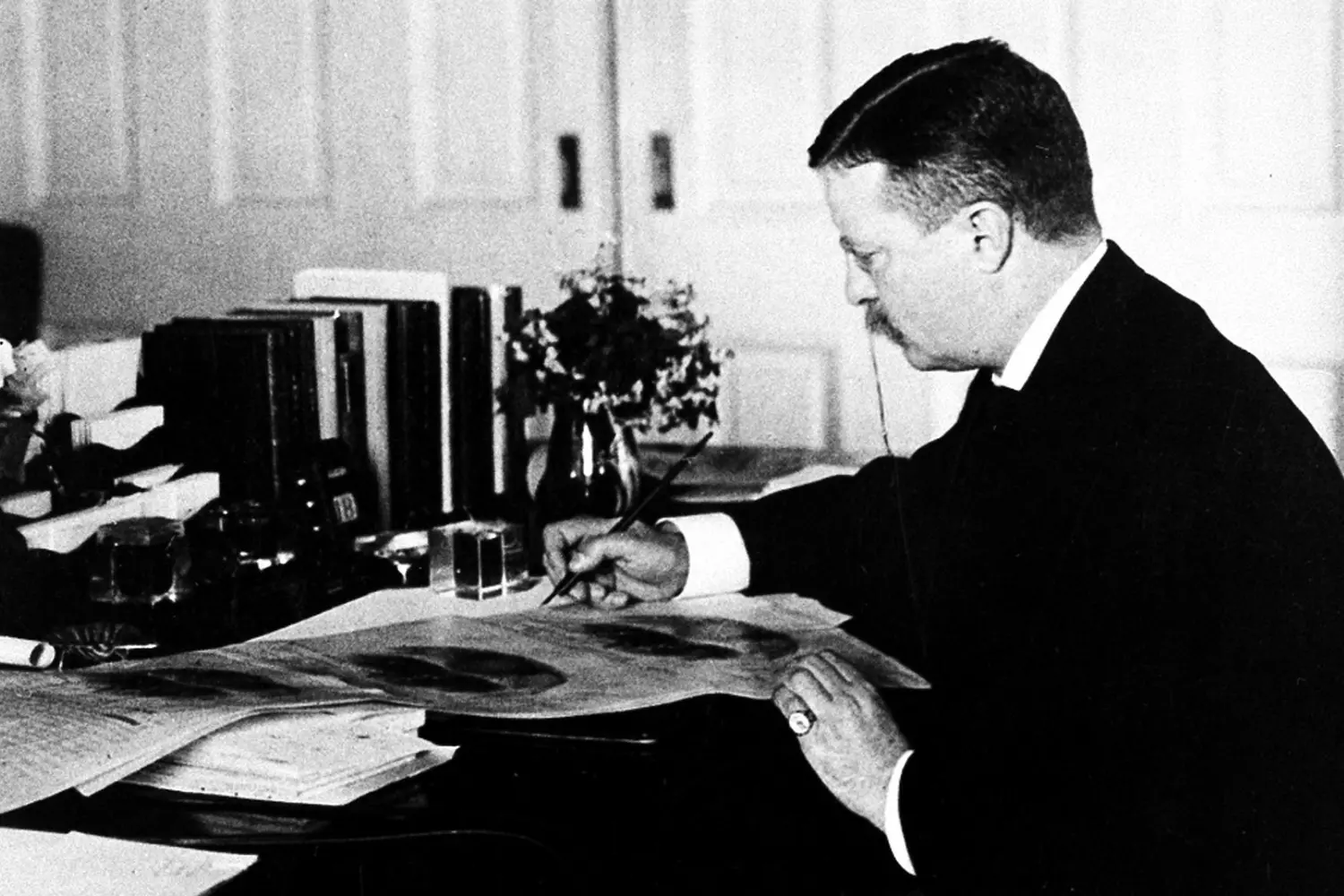
Why Theodore Roosevelt Remains a Symbol of Respect and Inspiration
More than a hundred years have passed since Theodore Roosevelt left the presidency, yet his name still evokes admiration and deep respect. He is not just a historical figure whose face is carved into Mount Rushmore alongside other great American leaders. Roosevelt is a symbol of energy, change, and civic responsibility, who left behind much more than formal laws and projects. His legacy lives on in the hearts and minds of millions around the world.
- A Symbol of Determination and Reform
Roosevelt was not afraid to make tough and unpopular decisions. His presidency came at a turning point — the industrial revolution, the rise of corporations, and social inequality demanded change. He became the first president to truly take on monopolies, defend workers’ rights, and introduce new standards for product quality control.
His “Square Deal” policy became a manifesto of justice — where every citizen, whether a working-class individual or an entrepreneur, could expect fair treatment and equal opportunities. Roosevelt knew how to unite people around the idea of reform and inspire action. His unwavering determination and willingness to take risks made him a truly great leader. - A Legacy That Continues to Live On
But perhaps the most important thing Roosevelt left behind was an idea. He believed that a true citizen is someone who is engaged, who is not afraid to act, and who takes responsibility for the fate of their country and society. He said, “The greatness of a nation and its moral progress can be judged by the way its animals are treated.” This was only one of his many wisdoms, reflecting deep humanity and understanding of the world. Roosevelt inspired generations of Americans to be active participants in life, to fight for justice, to grow and learn. His example serves as a reminder that the strength of character and the spirit of change can alter the course of history.
Why do we still talk about Roosevelt?
- He showed that leadership is not just power but service to the people.
- He proved that change is possible if one is brave enough to stand by their principles.
- He combined political will and love for nature, laying the foundations of the modern environmental movement.
- He became a model of civic responsibility, reminding everyone: “Do what you can, with what you have, where you are.”
Today, as the world faces new challenges — social, environmental, political — Roosevelt’s lessons remain more relevant than ever.
Theodore Roosevelt in Culture and Art: An Image That Inspires Centuries
Theodore Roosevelt is not just a historical figure but a cultural phenomenon whose influence reaches far beyond politics and history. His charisma, courage, and reformist spirit made him a public favorite and a source of inspiration for artists, writers, filmmakers, and musicians. Roosevelt’s image continues to live on in books, films, sculptures, and even popular culture, turning him into a true legend of American and world culture.
- 01. Literature: Books and Biographies Revealing Roosevelt’s Personality
Roosevelt himself was a prolific writer — author of over 30 books and hundreds of articles. His works covered a wide range of topics: from natural science and history to political philosophy and adventure stories. He didn’t just write about himself but created an entire layer of American literature of that era.
After his death, many biographies and studies appeared that continue to inspire readers. Among the most famous are David McCullough’s “Mornings on Horseback” and Kenneth Walsh’s “The Life of Theodore Roosevelt.” These books help us understand how complex and multifaceted this man was.
Moreover, Roosevelt became a hero in fictional works — from historical novels to children’s books — where he appears as a true hero, fighter, and explorer. - 02. Cinema and Theater: Screen and Stage Portrayals
The image of Theodore Roosevelt has appeared repeatedly in film and theater. Already in the silent film era, movies dedicated to his life and struggles were released. Later, in Hollywood, he became a symbol of energy and patriotism.
Famous actors such as Anthony Hopkins, Richard Dreyfuss, and Cory Stoll have portrayed Roosevelt on screen, conveying his charisma, passion, and inner strength. Films about Roosevelt often blend historical accuracy with drama, creating a vivid and memorable image. On stage, his persona inspired playwrights to craft plays reflecting the contradictions of the era, the fight for justice, and ideals of progress. - 03. Music and Pop Culture: Unexpected Interpretations
Roosevelt’s image also crossed into music. Folk songs from the early 20th century praised his leadership and patriotism. Contemporary artists sometimes reference his quotes and progressive spirit, making him a symbol of struggle and inspiration. Even comics and cartoons feature mentions of him, portraying Roosevelt as an energetic hero — an example of courage and determination for younger generations.
Theodore Roosevelt was one of the first presidents to use the new media of his time — newspapers, photographs, and even film — to craft a public image. He actively engaged with journalists, held press conferences, and appeared in short documentaries, understanding that popularity and public support depended on the ability to communicate his ideas. This media marathon helped him not only win the hearts of Americans but also set standards for presidential communication that are still used today.
The image of Theodore Roosevelt in culture and art is more than just a historical portrait. It is a living symbol that continues to inspire, unite, and remind us of the power of character and the importance of action.
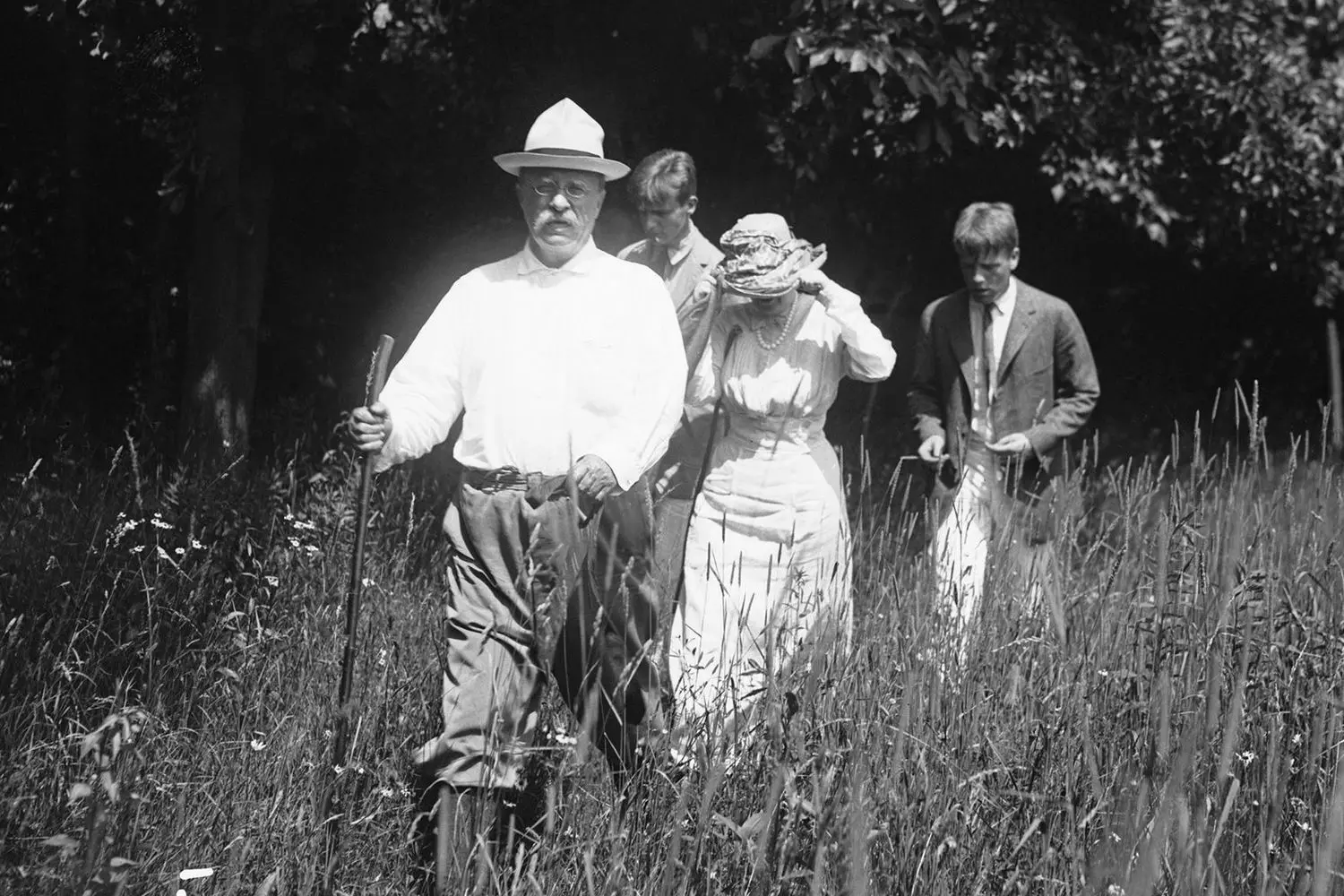
What Can Inspire Us Today: Life Lessons from Theodore Roosevelt
The century is changing rapidly — technology, society, economy — everything is developing at an unprecedented pace. At the same time, changes are often accompanied by crises, uncertainty, and challenges that put established norms into question. In such moments, it is especially important to remember those whose lives became examples of strength of spirit and determination. Theodore Roosevelt is exactly such a person, whose example inspires us not to lose hope and to keep moving forward, no matter what.
- 01. Personal strength in overcoming difficulties
The story of Roosevelt is the story of a man who struggled with weaknesses since childhood: severe asthma threatened even his life. Instead of succumbing to illness and fear, he found the strength to turn his weakness into a stimulus for growth. His decision to strengthen body and spirit is a lesson for everyone facing personal obstacles.
He taught us that the greatest victories begin with small steps. Regular exercise, discipline, faith in oneself — these are not empty words but concrete tools that help overcome even the harshest trials. "Do what you can, with what you have, where you are" — this simple phrase of Roosevelt can become a motto for anyone seeking the strength to start. - 02. An active civic position as the key to change
Roosevelt was convinced that every person can and must influence their surroundings. He did not agree with inaction and passive acceptance of injustice. For him, it was important not just to complain but to act — in politics, in society, in everyday life.
In today’s world, where it sometimes seems that one person cannot change global processes, Roosevelt’s example reminds us: change begins with one voice, one initiative, one action. Whether it’s participation in volunteering, environmental campaigns, or fighting for rights — it is important not to stay on the sidelines. - 03. Courage to make decisions in unstable times
Roosevelt was not afraid to make difficult and unpopular decisions if he believed they were right. In the crisis moments of history, he showed that a leader is not only a person with power but also a person with responsibility. His approach to reforms, fighting monopolies, supporting workers demonstrates that changes require not only words but concrete actions.
For today’s world, full of uncertainty, this lesson is especially important. It teaches us not to fear mistakes, to learn from them, and to move forward despite fear and doubts. - 04. Constant self-development and love of life
Roosevelt strove for knowledge all his life — he was a prolific writer, researcher, naturalist. He read a book a day, studied the surrounding world, and participated in many different fields of life.
This is an example for the modern person who faces information overload and constant stress. Learning, developing, maintaining interest in life means staying alive, being ready for challenges, and finding joy even in difficult times.
Today, when the world again faces many trials — from climate change to social challenges — Theodore Roosevelt’s example reminds us: the strength of personality, perseverance, and responsibility can not only help survive but lead to real change. The main thing is not to be afraid to act, especially when it is difficult.
Traces of a great leader: the most iconic places in the USA connected to Theodore Roosevelt
Theodore Roosevelt is a figure firmly inscribed in American history, leaving behind not only a political legacy but also physical marks in many parts of the country. From his childhood in New York to vast national parks — places associated with Roosevelt tell about the multifaceted nature of his personality and reflect the spirit of that era. If you want to feel the atmosphere of the time and understand how one of the most charismatic US presidents lived and acted, be sure to visit these iconic locations.
- 01. New York — place of birth and youth
Theodore Roosevelt was born and raised in one of the busiest cities in the world — New York. His family home, located in the Upper East Side of Manhattan, is today partially preserved as a historic monument. Here he spent his early years, fighting illness and strengthening his spirit.
- Theodore Roosevelt Birthplace National Historic Site — a museum in the house where the future president was born. The exhibit details his childhood, family, and the formation of Roosevelt’s character.
- In New York, he also received education and began his political career — a walk through the city streets helps to feel the context of his time.
- 02. Mountains and forests of North America — sources of strength and inspiration
Roosevelt was a passionate naturalist and hunter, which found expression in his close connection with nature.
- The Northern Appalachians and the Adirondack Mountains in New York State — places where the young Theodore spent much time hunting and hiking.
- In these mountains, he tempered his body and spirit, developing a love for nature that later led to large-scale conservation programs.
- 03. Theodore Roosevelt National Park — a tribute to the reformer and hunter
- Theodore Roosevelt National Park in North Dakota — one of the symbols of Roosevelt’s legacy. Here, the nature he loved and protected is preserved.
- The park is named after him for a reason: after tragic family losses, Roosevelt went to these plains to regain strength and start a new life.
- Today, the park offers scenic trails, bison encounters, and stunning landscapes reflecting the spirit of the American West.
- 04. Ellis Island and the Roosevelt Monument at Mount Rushmore
- Mount Rushmore in South Dakota — the site where four great U.S. presidents are carved in stone, including Theodore Roosevelt. His face here symbolizes determination and reform.
- This monument is not just stone with carved portraits, but a reminder of Roosevelt’s contribution to the formation of modern America.
- Nearby, there is a museum and exhibits dedicated to each president, where you can learn much about Roosevelt’s life and times.
- 05. National parks and reserves created by Roosevelt
Roosevelt is the father of the American national parks and reserves system. He personally created and protected dozens of natural areas, leaving a rich legacy:
- Yellowstone National Park
The world’s first national park, which Roosevelt not only supported but also personally visited. - Sequoia and Kings Canyon in California
These majestic forests of giant trees were placed under protection thanks to Roosevelt’s initiatives. - Cape Cod National Seashore
And many other territories where he fought for wildlife conservation.
Visiting these parks is an opportunity to see how Roosevelt viewed and loved American nature.
- 06. Oyster Bay, Long Island — family home and presidential headquarters
- Sagamore Hill — Roosevelt’s country residence on Long Island, where he lived most of his life when not in Washington.
- The house has been turned into a museum where you can see the president’s personal belongings, his office, and library.
- This place preserves an atmosphere of family comfort and reminds us that even a great leader valued simple human joys and time in nature.
- 07. Washington, D.C. — the heart of American power
- The White House — the residence where Roosevelt implemented his reforms and carried out most of his significant initiatives.
- The Smithsonian Institution — an establishment he collaborated with, including the famous African expedition aimed at replenishing museum collections.
- In the capital, you can also visit memorials and monuments dedicated to Roosevelt, including one of the statues in the National Hall of Fame.
Each of these locations is a living page of history, filled with the spirit of the era and the personal energy of Theodore Roosevelt. Walking through them helps to understand the man behind the political façade — a passionate hunter, conservationist, fighter for justice, and simply a loving father and husband.
Visiting these places is not just a tour but a journey into the past that inspires today. Immerse yourself in the atmosphere of the time, feel the breath of the wilderness, and experience the strength of a personality that changed America forever. Want to see these iconic places with your own eyes? American Butler organizes unique tours following the footsteps of Theodore Roosevelt — from New York to national parks, from the White House to the plains of Dakota.
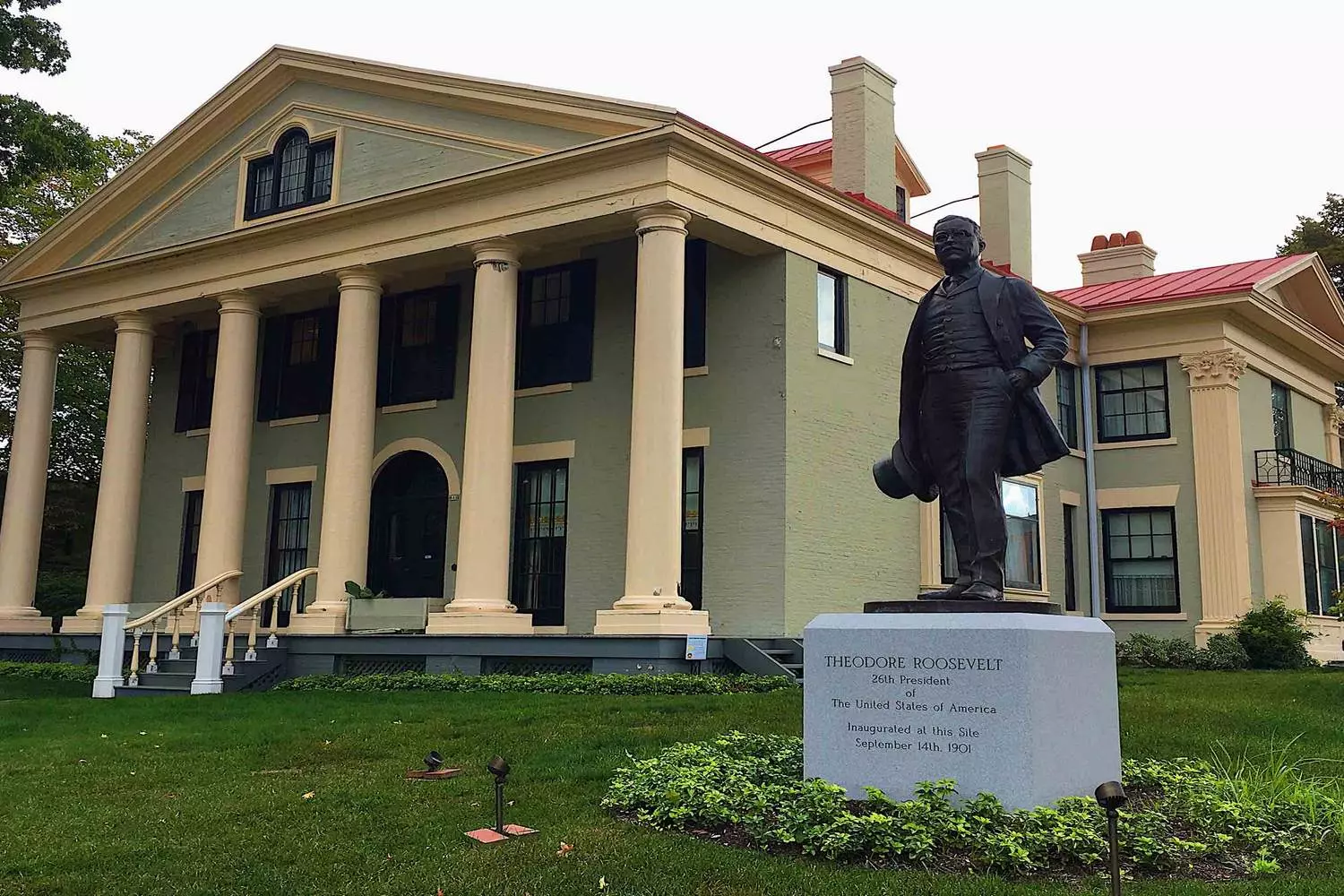
Theodore Roosevelt: The Man Who Lived on the Edge of Possibilities
Theodore Roosevelt is one of the most charismatic and energetic presidents of the United States, whose life reads like an adventurous novel. From an asthmatic boy to the leader of a nation, from a bison hunter to a Nobel Prize laureate — his biography is full of unexpected twists and amazing facts. Ready to learn about him what you won’t find in textbooks?
- 01. The Creator of the “Teddy Bear”
In 1902, during a hunting trip, Roosevelt refused to shoot a bear tied to a tree, considering it unsportsmanlike. A caricature about this story inspired the creators of the plush bear named “Teddy” in honor of the president. Thus, one of the most beloved childhood symbols was born. - 02. Duel Pistols to Defend His Honor
In his youth, Roosevelt was pathologically jealous. When another man tried to court his fiancée Alice Lee, Theodore ordered duel pistols from France and threatened to challenge his rival to a duel. Fortunately, the duel never took place. - 03. Refusal of a Million Dollars Because of a Mustache
In 1910, the inventor of the safety razor, King Gillette, offered Roosevelt $1 million to head his company. Roosevelt declined, saying: “I do not trust a man who makes razors and wears a mustache.” - 04. The First President to Fly in an Airplane and Dive in a Submarine
Roosevelt loved technological novelties. In 1910, he became the first sitting U.S. president to take flight in an airplane (a Wright brothers’ biplane). Even earlier, in 1905, he personally tested a submarine by diving to the bottom of Long Island Sound. - 05. A Failed Farmer Who Lost a Million
In 1883, Roosevelt bought a ranch in Dakota, dreaming of becoming a cowboy. He raised cattle, wore a leather jacket, and even caught thieves on a frozen river with a Tolstoy book in hand. But the business failed: drought and overgrazing wiped out the herds. Losses amounted to about $1 million in today’s money. - 06. Night Patrol in the Slums of New York
As head of the New York Police Department (1895–1897), Roosevelt personally checked the vigilance of the officers. Wearing a black cap and worn clothes, he wandered through criminal neighborhoods at night and noted violations. Once he caught a sleeping officer and fired him on the spot. - 07. A Fan of Tolstoy and... an Egg-Eater
During the hunt for thieves in Dakota, Roosevelt took a Tolstoy book with him — reading it by the campfire. He also ate 12 eggs for breakfast, considering it the perfect food for an energetic person. - 08. Family on Stilts
In the Roosevelt family, everyone, including his wife and children, could walk on stilts. The president considered it an excellent exercise for coordination. - 09. Blindness in One Eye
During a boxing match in the White House, Roosevelt received a blow that blinded his left eye. But he hid this for years so as not to appear weak. - 10. Posthumous Medal of Honor
For bravery in the Battle of San Juan Hill (1898), Roosevelt was nominated for the highest U.S. military award, but was denied at the time. Justice was served only in 2001 — he became the only president awarded the Medal of Honor.
Theodore Roosevelt proved that even a person with poor health can become a symbol of strength if they possess an indomitable will. His life is a story of how passion, principles, and fearlessness change the world.
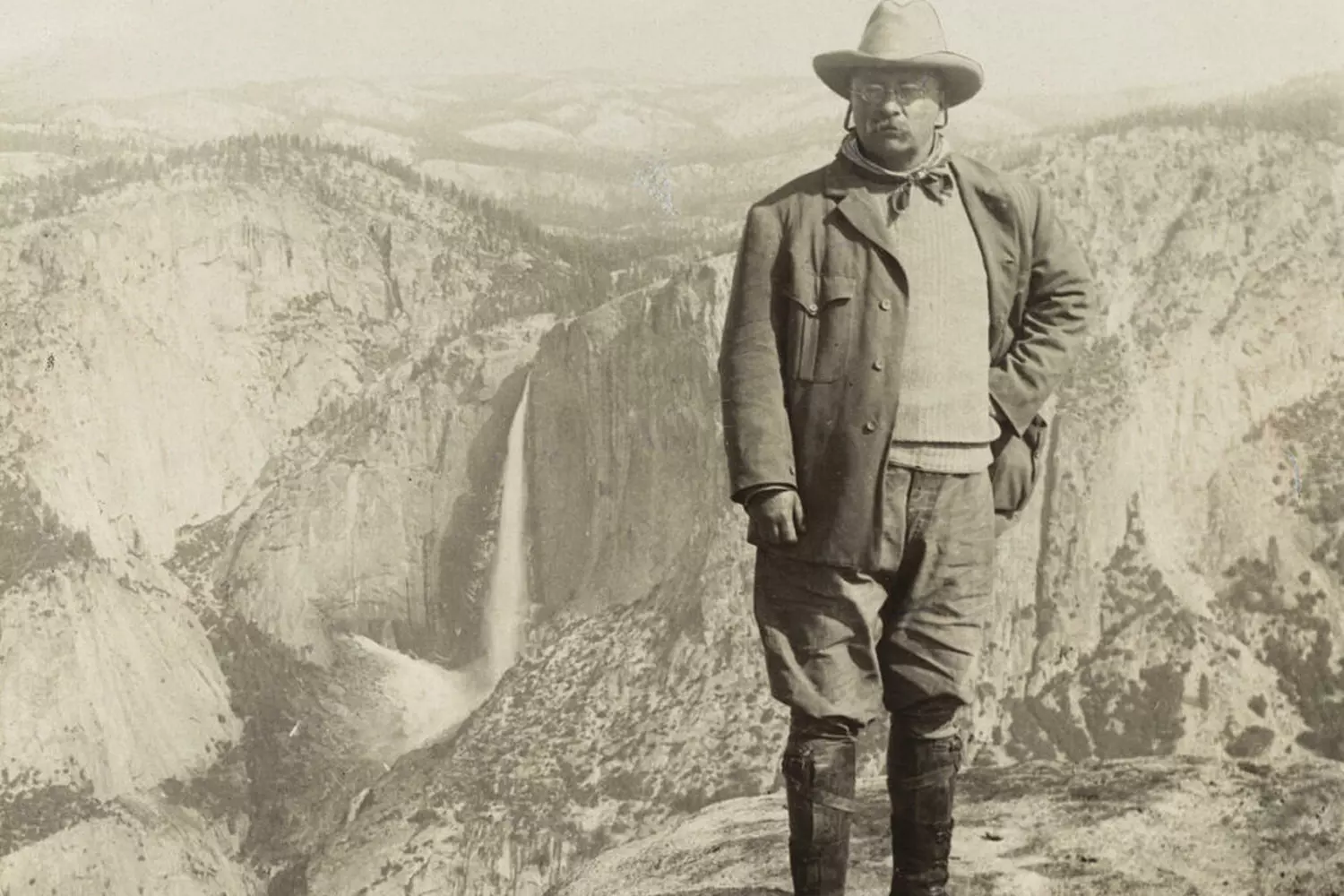
Want to Walk in Theodore Roosevelt’s Footsteps? American Butler Knows How to Make It Happen
From Washington to the Great Plains, from New York to the national parks — a route filled with history, nature, and the spirit of one of America’s most remarkable presidents.
We organize a personalized tour where you will:
- Visit museums and monuments connected to Roosevelt;
- Explore the nature reserves he was proud of;
- Walk the trails once traveled by a man who feared neither the wild nor reform.
American Butler — your guide to the past that shaped the future.














